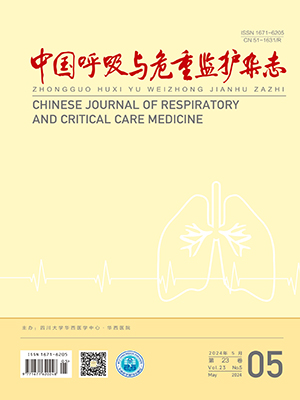Objective To investigate the manifestations, diagnosis and treatment of tracheobronchopathia osteochondroplastica ( TO) . Methods Two cases of TO were described and 76 cases in the medical literature after 2000 were reviewed. Results TO usually manifests in adults, and affects both genders. The clinical presentation of TO is nonspecific. Bronchoscopy remains the gold standard for diagnosing this condition. Hard sessile nodules arising from the anterior and lateral walls of the airway,
typically sparing the posterior membrane, are classic appearance that can be easily recognized. The CT scan is more sensitive and specific, which plays an important role in the diagnosis of TO. Bronchial biopsies disclose the abnormal presence of cartilage and bone tissue in the bronchial submucosa. To date there is no
specific treatment for the disease. Only a minority of cases develop into significant upper airway obstruction and require invasive procedures to remove or bypass the obstacle on affected airways. Conclusions TO is a stable or slowly progressive benign disease. Chest computed tomography and fiberoptic bronchoscopy are the
best diagnostic procedures to identify TO.
Citation: YE Jun,TAN Xiaoming,XIA Chunyan,SHI Zhaoquan,XIU Qingyu.. Tracheobronchopathia Osteochondroplastica: Two Cases Report and Literature Review. Chinese Journal of Respiratory and Critical Care Medicine, 2010, 9(1): 66-69. doi: Copy




